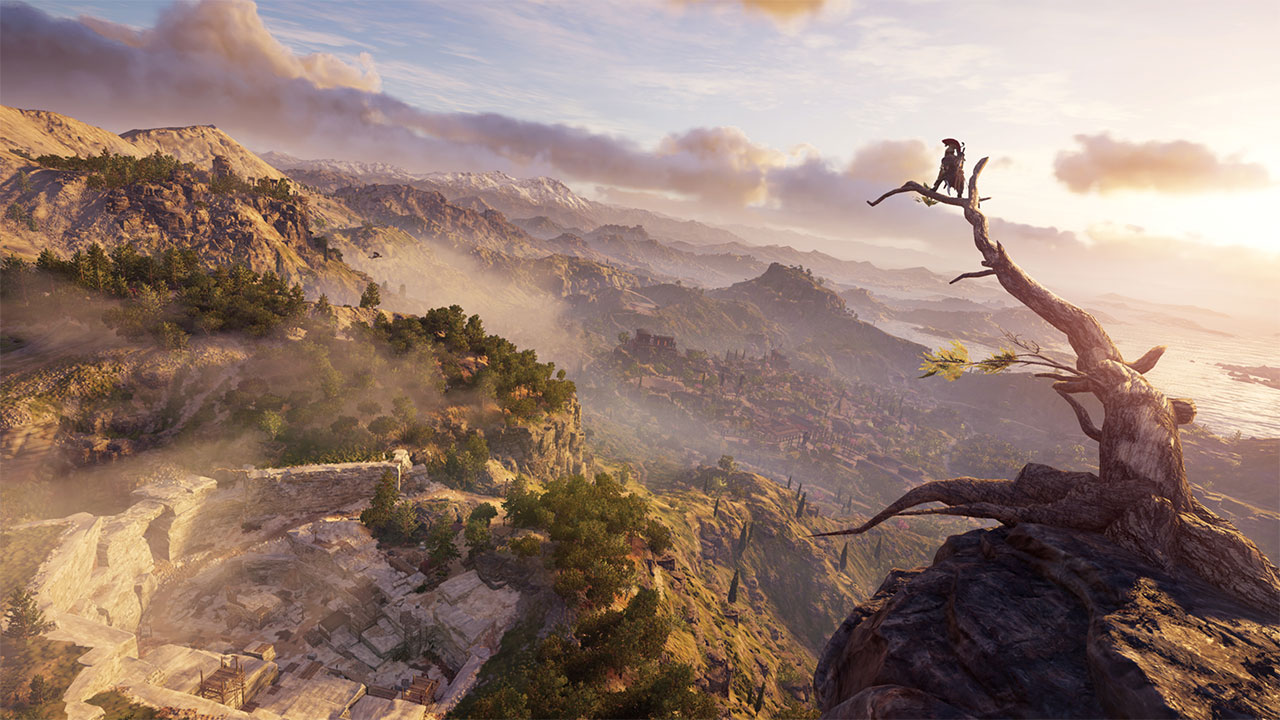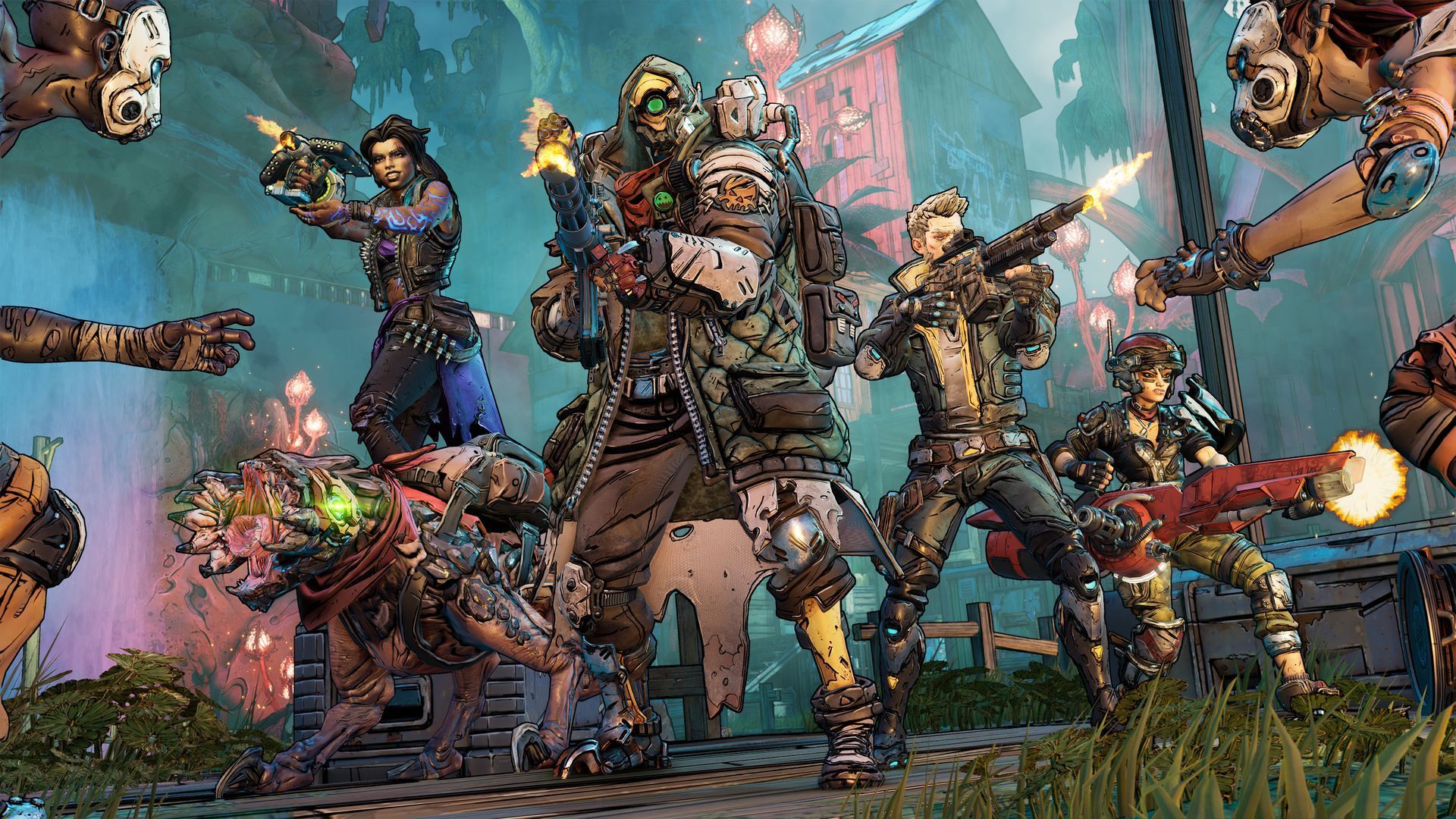The art and science of fall damage, and how it can make or break a video game
Is fall damage still a necessary evil in 2019, or a dated relic of a bygone era of video games?


Ubisoft games have a new cliche, and it’s turning us all into social media stars
Falls are the second leading cause of accidental death amongst the human race every year. Apologies if that comes across as morbid, but it's worth reminding ourselves that one of the biggest threats to humankind has always been, and always will be, our stubborn intolerance to the forces of gravity. It's no wonder, then, that fall damage is one of the most recognisable tropes in video game history, up there with quick-time events and insta-fail stealth sequences as a genre-hopping staple of the medium itself.
This year alone, games like The Outer Worlds, Days Gone, and Death Stranding are proving that staircases, ramps, and all other vertical deviations in terrain can be just as deadly as any traditional threat to a player's health, while landmark titles such as Skyrim and GTA 5 have famously spawned viral videos from their capacity to turn players into crumpled ragdolls at even the slightest flirtation with gravity.
On the other end of the spectrum, however, you find titles like Borderlands 3, Apex Legends, and Kingdom Hearts 3 – three games which also released this year and feature characters who can plummet from death-defying heights without losing a single drop of their health. It seems like more and more games are saying goodbye to fall damage in this way, too, with Assassin's Creed notably abandoning its own historical laws of physics by getting rid of the mechanic completely in last year's Assassin's Creed Odyssey.

It begs the question: do we still need fall damage in video games? If so, when does it make the most sense and, if it does, how do developers calculate the best ratios to determine the appropriate amount of health lost for each and every impact? To answer any of these questions, we need to head back to the classroom for a quick Key Stage 3 science lesson.
Free falling
Whether a human can survive a fall, or land without any serious injuries, IRL depends on a number of factors, including the distance of the drop (obviously), the person's weight, how they land, and the topography of the terrain with which they make an impact. Those first two factors have a big influence on what's called terminal velocity, the maximum speed at which an object can fall through the air. It takes, on average, about 12 seconds for a human to reach their terminal velocity (120mph), which equates to a drop of 450 metres, and once you've reached that, the chances of survival are next to zero.
It's easy to assume developers would use these accepted equations as rules to play by when calculating fall damage in their video games, but our virtual worlds are usually far more punishing in that regard. The almighty Dovahkiin will start losing health from drops of 10 yards or above in Skyrim, for example. Should you descend anything beyond 40 feet in Red Dead Redemption 2, you're pretty much toast. Games also tend to ignore the nuances and variables that can alleviate or exacerbate the impact of a drop, such as altitude, surface area, muscle tension, and more, presumably because priorities in the development pipeline simply leave little time to crack the fine science of vertical collision detection.

The Legend of Zelda: Breath of the Wild, for example, doesn't use Link's downward velocity as the yardstick for determining how much health he'll lose once he hits the ground, but seems to rely entirely on the distance he has travelled, regardless of how fast he's travelling by the end. Using the motion of an opposite force to counterbalance your descending velocity, then, doesn't mitigate the amount of health you'll lose, which can look somewhat awkward when tested out in practice.
Weekly digests, tales from the communities you love, and more
But Breath of the Wild is also a game with Moblins, Chuchus, and sexy fish men, so who are we to question Hyrule's laws of physics? Indeed, many role-playing games, a genre in which the aggravations of fall damage are often most painfully felt, abide by strict rules of internal logic loosely inspired by our understanding of gravity in the real world, but for what purpose?
It might well be to gamify the navigation of steep terrain, add a sense of weight to character movement, or – in the case of The Outer Worlds – make a knowing comment on the cliche with an Acrophobia Flaw that exacerbates the impact of fall damage for anyone who has spent too much time carelessly stumbling off of dangerous heights in the first place. In other instances, however, the implementation of fall damage comes across as a joyless exercise in ticking another box on the checklist of video game design criteria, situated between characters who can't swim and inventory over-encumbrance.
Simple math
"When a game does forgo fall damage entirely, I've never really questioned its absence."
On the flipside, when a game does forgo fall damage entirely, I've never really questioned its absence. As much as I understand the desire from some developers to include the mechanic to create a better sense of realism or role-playing, the removal of it entirely can tear down a wall between you, the player, and the fun at the heart of an experience.
The lack of fall damage in Apex Legends – a fast-paced multiplayer shooter with vertically skewed combat scenarios – makes a lot of sense, allowing players to focus on what's in front of their iron sights rather than under their feet. In Assassin's Creed Odyssey, there's thematic context for the sudden removal of the series' fall damage, with Ancient Greece's mythologised landscape allowing for a greater suspension of disbelief, specifically the disbelief that Kassandra could survive a straight drop from Mount Xenos without flinching.

The suitability of fall damage in the video games of today therefore depends on the kind of experience that a developer is aiming for. Those wishing to target realism are naturally drawn towards a penalty that replicates the universal truth that – surprise! – humans and gravity don't mix. But games are works of escapist fantasy, and studios shouldn't be afraid to lean into that suspension of disbelief with the absence of fall damage if they believe it makes more sense for that virtual world, allowing for a more liberated experience.
On the flipside, the games that do continue to embrace the fall damage tradition could always revise the standardised equations in a way that doesn't feel overly punitive or unfair, relying so doggedly on a reductive "distance travelled/health lost" ratio. Fall damage still has a place in the video games of today, but the current standard for their implementation is ripe for innovation and experimentation beyond the ragdoll physics and instant deaths that have instilled players with a heightened sense of acrophobia for far too long.
Check out the biggest new games of 2019 still on the way, or watch the latest episode of Dialogue Options below.
I'm GamesRadar's Features Writer, which makes me responsible for gracing the internet with as many of my words as possible, including reviews, previews, interviews, and more. Lucky internet!



